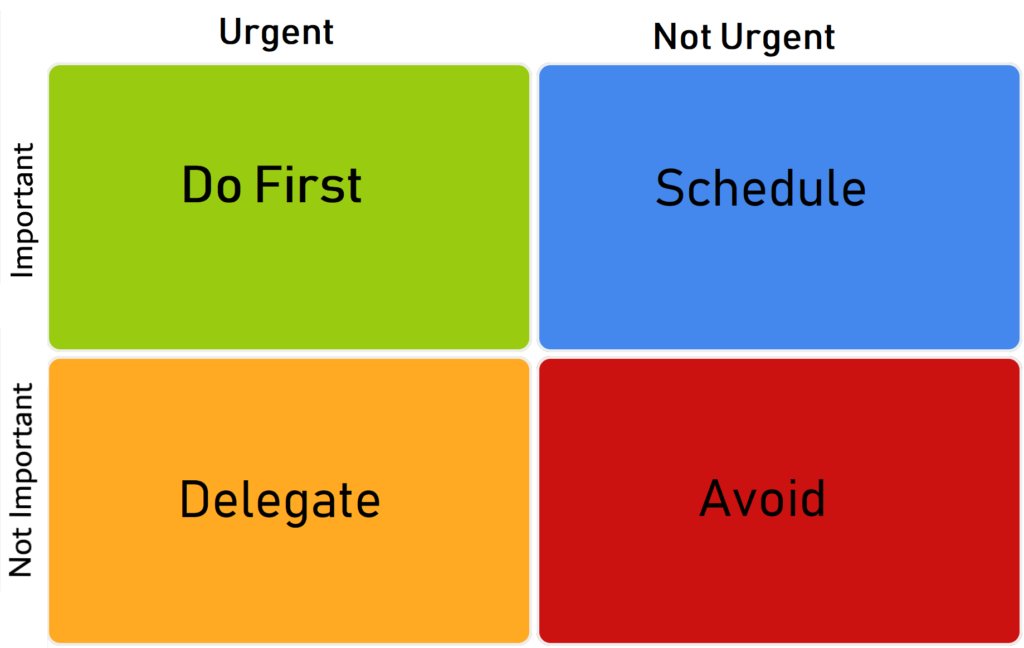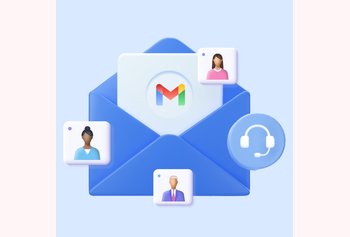12 Easy Ways to Reach Inbox Zero

Table of contents
Each of us have different ways and quirks of managing our emails. But if there’s something all of us can agree on, it’s that our inboxes have become a source of dread and anxiety.
We get too many emails and so, our inboxes are constantly cluttered. Finding important information has never been harder. And we’re constantly on edge thinking we’ll miss something – a meeting invite, some important feedback.
But what if I tell you that it doesn’t have to be like this. In this article, I’ll talk about inbox zero, a concept first coined by productivity expert Merlin Mann, that can help you tame your inbox.
Let’s jump in!
Table of Contents
- What is Inbox Zero?
- Top 16 Strategies To Achieve Inbox Zero
- 1. Make a priority list for your emails
- 2. Declutter with joy
- 3. Say NO to Uncle Spam
- 4. Don’t get trapped in the Zeigarnik Effect
- 5. Touch, sort, and move on!
- 6. Filter the bad guys — focus on the good guys
- 7. Aim to avoid unnecessary conversation
- 8. Sign off with purpose
- 9. Archive them to achieve them
- 10. Create action-based folders
- 11. See them CCs OFF!
- 12. Put on some music and make Inbox Zero a happy goal
- 13. Designate fixed time each day to check emails
- 14. Remove the email app from your smartphone/mobile device
- 15. Use Canned Responses for Common Replies
- 16. Conduct regular email audits
- Wrapping up
What is Inbox Zero?
Inbox Zero is the process of methodically managing your incoming emails (deleting, sorting, or clearing) so that your inbox is clean at all times. It’s an email productivity strategy that ensures you develop a better relationship with emails and aren’t constantly stressed and checking your inbox.
Contrary to what the name literally suggests, Inbox Zero is more a mindset change than actually maintaining an inbox with zero emails. Merlin Mann wanted people to be freed from the shackles of their inbox and instead focus on doing their actual work. He wanted people to take control their inbox, not let their inbox control them.
Now, how do you achieve inbox zero? Is there a straightforward step-by-step guide? No. But there’s strategies and concepts you can apply that can help you achieve inbox zero. I’ll list out and explain the best ones I know.
Top 16 Strategies To Achieve Inbox Zero
Here are 16 easy strategies to get to inbox zero-
1. Make a priority list for your emails
Make a list of your emails in order of priority so that you know which ones to work on and close first and which ones you can push for later. Having a clear vision of what you need to work on first will help alleviate the fear of missing something important.
You can approach this in two ways –
- The Eisenhower Matrix
- Brian Tracy’s Prioritisation Mechanism
The Eisenhower Matrix
If you befriend practicality better than you befriend emotions, the Eisenhower Matrix—a theory based on the urgency and importance of the task—is for you.
The 34th US President obviously had a lot on his plate and this is how he prioritized:
Do (urgent and important)
It’s now or never
Example: An email invite to a board meeting today
Decide (important but not urgent)
You can wait to execute this email
Example: The accounts team wants the monthly spend data
Delegate (not important but urgent)
Someone else can do it for you
Example: A colleague asking you to proofread an article
Delete (not important, not urgent)
You can do without it
Example: Social media notifications

Apply this to your to-do list and segregate your emails accordingly; you’ll not just be closer to Inbox Zero but you’ll also know how much attention every task or email is worth.
Brian Tracy’s Prioritization Mechanism
On the other hand, if you’re someone who thinks from the heart and attaches feelings to emails, Brian Tracy’s Prioritization Mechanism is ideal for you.
It is based on Mark Twain’s quote, “Eat a live frog first thing in the morning and nothing worse will happen to you the rest of the day.”You can manage your inbox based on the idea that you start with something you don’t want to do so that the rest of the day with your inbox will be a breeze.
You can use Twain’s philosophy to prioritize emails and tasks in the following ways:
Things you don’t want to do, but actually need to do.
Example: Proofreading a 3000-word article that needs to go out today!
Move these to your To-do list and keep inbox count low
Things you want to do, and actually need to do.
Example: Responding to emails that require finalizing certain decisions.
This will reduce more incoming emails regarding the same subject
Things you want to do, but actually don’t need to do.
Example: Scheduling meetings. You can ask your intern/secretary to handle these. Filter such emails into a different folder.
Move these to a delegate folder or forward them to the respective person you want to delegate them to.
Things you don’t want to do, and actually don’t need to do.
Example: Promotional emails or emails where you’re CC’d that don’t require you to do anything.
Delete these emails and head to Inbox Zero faster.
2. Declutter with joy
Japanese Organizing Consultant and Bestselling Author, Marie Kondo believes in and practices keeping only those belongings that ‘spark joy’. Centered around the phenomenon of joy, Marie takes her clients through a step-by-step process of organizing and decluttering by getting them to keep what they really want to keep.
Deletion of emails could be a harsh step for many and that’s why people either avoid doing it or procrastinate, but Marie’s joy factor could well be a gamechanger and help you delete emails in an easier and faster way.
Marie asks people to hug their belongings to see if the object in hand gives them joy and then take the appropriate decision to dispose or store the object.
Now, you cannot hug your emails, but you can surely earmark those that don’t give you joy and delete them in a click!
3. Say NO to Uncle Spam
Inbox Zero’s Number 1 enemy is clutter. And spammers contribute to that clutter.
How do you keep spammers away? You give away your email so many times, while filling forms, surveys, or signing up to a free trial. More often than not you get added to an email drip and become a subscriber.
This is why you should conduct regular audits of your inbox where you unsubscribe from newsletters you’re not interested in. You should also be more mindful of where you share your email or where you sign up.
4. Don’t get trapped in the Zeigarnik Effect
If you’re currently stressed about emails, it’s probably because of the Zeigarnik Effect.
In the late 1920s, a Lithuanian psychologist Bluma Zeigarnik found out that incomplete tasks are remembered twice as much as completed ones, which leaves us (and the people around us) in a state of anxiety.

And with emails popping up all day long into our inbox, this anxiety is not going anywhere. So, if you’re
someone who’s feeling really stressed, you can take one of the following measures.
- Pause incoming emails while you handle important messages. You can use tools like Boomerang for this. You can choose the time period and even make exceptions to some emails.
- Leave an Out of Office message for all your clients and colleagues when you’re away for a holiday so that you don’t find yourself sneaking back to your phone/laptop all the time. Plus, you will not have to get back to a loaded inbox.
5. Touch, sort, and move on!
The ‘touch it once’ rule dates back to a very long time ago when the world ran on paperwork. This very old but profound rule says that once you touch a piece of paper you never touch it again, so it forces you to deal with it then and there, which is great.
So any emails you come across that seem like one-off tasks that you can finish and forget about, do them then and there. Basically once you’ve ‘touched it’, complete it and get rid of it.
This will avoid a pile-up and emails would go ‘out-of-sight’ so you can stop thinking about it. If you’re short on bandwidth, extract the task into a separate to-do app (I’ll talk more about this later) and archive the email.
This way, your inbox will continue to make its way to the Zen Zero destination, while you handle your affairs behind the scenes.
6. Filter the bad guys — focus on the good guys
One of the best ways for you to concentrate on relevant emails is to filter or unsubscribe from those that aren’t. Unsubscribe from promotional emails like coupon offers, bank notifications, and newsletters. You can use tools like Unroll.me for a mass unsubscribe.
Of course, if you’ve voluntarily subscribed to a newsletter, but don’t want it giving you the mafia stare down from your inbox, set up a filter to automatically send it to a folder, from where you can access it whenever you want.
The core idea here is that you remove unnecessary emails altogether by unsubscribing and filter ones that you want to keep but aren’t urgent. This way your primary inbox will only contain emails that are urgent or relevant to you and you can focus on them without distractions.
7. Aim to avoid unnecessary conversation
Defusing clutter that’s not created by us might be easy, but what about clutter that we create?
Every email we write, read or respond to is part of the inbox clutter.
We don’t realize it when we’re busy shooting out emails like a loose cannon, but reality soon hits us when we see a big number next to the word Inbox.Now, you might wonder, why not reply and be done with it? But it’s not that easy, is it?
The rush in your mind translates to errors, lack of clarity, unexplained terms/jargon in the email. This will lead your recipient to write back for clarification and this triggers unnecessary and avoidable back and forth.
How can you reduce the back and forth of emails and keep your inbox free?
- Proofread: Look out for wrong grammar or punctuation, incomplete sentences, spelling errors.
- Mistyped Information: Check if you’ve got the details right — date, time, venue, names, etc.
- Add more bullet points: Adds clarity to your email.
- References: If you feel certain documents or PPTs contain all that your recipient needs to know to move ahead, you can just attach them to the email so that there’s no scope for missing out on anything.
In summary, don’t send emails unless necessary. And when you do, spend a little more time crafting one that conveys all the necessary information to avoid back and forth.
8. Sign off with purpose
Sign off with a signature that gives closure to people sending you emails (that aren’t relevant to you).
If you’re getting emails from colleagues about stuff that is not part of your job, you can sign off with a line “Received your mail. Please note, I’m not part of the design team, please send subsequent emails on this subject to the appropriate members.”
Or, if you’re being pitched some freelance work you’re not interested in, then something like this could work – “Thanks for your mail. Unfortunately, this isn’t a fit for me.”
The idea is to write a response that saves you from a string of follow-ups (I am sure you’ve noticed how everyone follows up with superhuman persistence these days).
9. Archive them to achieve them
Do you start the day with a to-do list? If yes, you’re one of the organized ones.
Do you also keep your to-dos right inside the inbox (as emails)? That’s not a great idea. You’ll be forced to keep checking your inbox often. And until you finish the task, those emails will just keep lingering around.
Kevin Kaland of Wizone Solution has a neat way to deal with this: “One trick that has always helped me keep my inbox count down is to extract the actual tasks or things to do from emails and put them into a task manager or to-do app.
Then I label the email ‘IT-Tasked’ (so the label floats high in my label list) and archive it. This alleviates a lot of mental weight.”
Some of the to-do apps you can use – Remember the Milk, Todoist, Habitica, or the good old checklist feature on the notes app.
10. Create action-based folders
You can create action-based folders that tell you what action a particular email will require from you. Double Gemini CEO Prashant Nair uses the Stack Method which treats emails as actions rather than messages.
Nair sorts his emails in the following manner –
- Reply – ones that need a direct response
- Forward – ones that need to be forwarded or delegated to other systems
- Meet – any event or meeting that needs to be scheduled in your calendar
- Review – your CC emails or newsletters
- Do – the tasks that need to be done
Similarly, you can keep your inbox light by sorting emails into action folders. This kind of zoning into one action helps you focus and complete tasks on time.
11. See them CCs OFF!
If you’re someone who is a part of many groups or associations and are often subjected to various common announcements, you’ll find yourself in the CC category and that just means it’s a mail that doesn’t need immediate action. classic case of FYI, unless of course the subject line indicates bad news/urgency of some kind.
If you don’t want the FYI emails to hoard your inbox, create and filter CC:me emails to a separate label/folder.
This works both ways. As a sender too, you should know better. CC someone only if you really really need to.
12. Put on some music and make Inbox Zero a happy goal
Several studies have proven that music is a real mood uplifter and is a real mood uplifter and makes people happy workers. It’s not news anymore that music can make mundane repetitive tasks feel like a party! Folding your laundry, washing your dishes, everything’s better with music. The same applies to something like email management.
So set aside some time for your inbox and put on some music. Any track that lifts you up or makes you happy will do the trick. The roaring rouse of Queen’s ‘We Are The Champions’ or the not so subtle ‘Eye Of The Tiger’ by Survivor. You’ll find that managing your inbox and hitting inbox zero is not all that difficult. In fact, you’ll look forward to it!
13. Designate fixed time each day to check emails
This is a pretty straightforward tip but keeping two or three fifteen-minute blocks of time throughout the day will help you ensure that you don’t constantly check your emails. You open your inbox, archive ones you don’t need immediately, respond to the ones that are urgent, and delete the ones that are irrelevant. And then you go back to your work.
It’s a simple but effective way of clearing out your inbox in regular intervals so that there’s no pile-up and you’re caught up on everything. A little bit of maintenance will go a long way.
14. Remove the email app from your smartphone/mobile device
Another thing you can do to make sure that you control your inbox and not the other way round is removing the email app from your phone and any other mobile device you may have like an iPad.
The reason for this is, you don’t want your emails to bother you outside of working hours or when you’re on a break. Imagine logging out for the day and going out with your family and still getting email notifications on your phone. It’ll stress you out and whether or not you want to, you’ll involuntarily end up thinking about work and emails.
Remember, Inbox Zero is not just about a clean inbox, it’s about a stress-free and decluttered mind too.
15. Use Canned Responses for Common Replies
If you’re someone who works in a customer-facing role or even an internal role where you get a lot of queries from customers/employees, then you should leverage canned responses. These are pre-written templates for the emails you send most often. This can save you a lot of time and effort in responding to emails.

Write clear and concise responses for these common scenarios. Many email clients, like Gmail and Outlook, have built-in features for canned responses, or you can use tools like TextExpander. While using canned responses, make sure to personalize the greeting and any specific details to maintain a personal touch.
16. Conduct regular email audits
Conducting regular email audits is a proactive approach to maintaining a clean and organized inbox. Set aside time at the end of each week or month to review and clean up your inbox. Think of it as a mini spring-clean.
Here are some things you should focus on –
- Review and Delete: Go through your emails and delete any that are no longer relevant or necessary. Be ruthless with old promotional emails, newsletters, and notifications.
- Unsubscribe: Take note of any recurring emails that you no longer find useful and unsubscribe from them. This will prevent future clutter.
- Update Filters and Folders: Adjust your email filters and folder organization as needed. Ensure that emails are being sorted correctly and efficiently.
- Archive Older Emails: For emails that you may need for future reference but don’t need in your immediate inbox, archive them. This keeps your inbox current and reduces clutter.
- Reflect and Improve: Assess your email management strategies and identify areas for improvement. Implement new rules or habits as necessary.
By performing regular email audits, you stay on top of your inbox and prevent things from becoming overwhelming, making it easier to achieve and maintain Inbox Zero.
Wrapping up
Now you know several simple steps you can take to reduce the clutter in your inbox and make email management a smooth process for yourself. Give any of these methods a shot and I guarantee you, you will feel a significant change in the way you interact with emails and your inbox.
Also read: 23 email management best practices to declutter your inbox

































